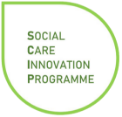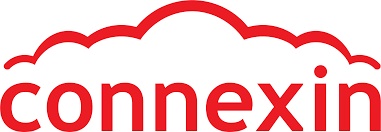Company Overview
Connexin Health forms part of Connexin, a technology business based in Hull that specialises in building wireless infrastructure and networks that connect cities and places.
Connexin built the UK’s first carrier-grade LoRaWAN network in Hull as well as procuring the UK’s first dedicated Smart City platform for Hull City Council, providing a completely end-to-end IoT solution for the public sector. Connexin is an award-winning provider, which includes IoT Breakthrough Award for Smart City Deployment of the Year in 2018 for their “UK’s Smartest Street” concept in Newcastle.
Connexin has recently secured £80 million investment to scale-up operations and now employs circa 70 members of staff. Connexin is building capability and capacity in the deployment of smart solutions. Connexin recently deployed the cities new smart city digital screens in Hull’s Paragon Interchange, the transport interchange providing rail, bus and coach services located in the city centre providing real-time updates on bus arrival and departure times using smart technology.
Connexin Health is a new part to the business aiming to bring the experience of building smart cities and connectivity to the health and adult social care sector.
Co-Founder and CEO, Furqan Alamgir, is a trained doctor and all members of his direct family practice in health, either as GPs or hospital consultants. With this pedigree, he understands, only too well, the challenges and pressures in these sectors.
His ambition now is to help build smart care homes, smart hospitals and support and prolong independent living, using smart technology by bringing together the best devices, sensors and detectors to a proven integrated platform. This will provide real-time data and insight into different operational areas, to give care providers the tools to measure, monitor and drive performance for the benefit of service users and those responsible for service delivery. The platform can be used to link sensors and devices that can trigger alerts and prompts for carers, as well as providing dashboard reporting on the information transmitted to the platform e.g. falls, motion detectors, weight, activity, medication administration etc.
Connexin Health is an end-to-end solution provider deploying new technologies and data platforms to support smarter solutions to service delivery.
Product Overview – This product is under development

This system helps to prioritise day to day tasks associated with the delivery of safe, caring, effective, responsive and well-led services. The Key Performance Indicator Dashboard provides an indicative score for each CQC domain and identifies areas for improvement. As well as providing indicative ratings for Safe, Caring, Responsive, Effective and Well-Led, the system has KPI Dashboards for Workforce, Complaints, Incidents and a Risk Register.
Each ‘standard’ or ‘indicator’ is weighted and added to a Dashboard. Some standards or indicators will be automatically scored as these are built into the operating system e.g. % of Staff Completed Safeguarding Adults Level 1 Training (or above). For standards or indicators that are not automatically generated the user will need to use a ‘template’ to measure compliance and performance and upload the document to the system as evidence e.g. the user may want to measure an indicator relating to an audit. The results provide an indicative score and supports organisations to build the evidence of compliance required for the CQC reviews.
The system assists staff to review how well their organisation is doing against key standards and how staff are performing against allocated tasks and statutory duties. This enables the organisation to quickly understand how well they are performing against CQC regulations and to identify and explore areas for improvement.
You can select the standard measures based on the Care Quality Commission (CQC) KLOEs (key lines of enquiry), and/or you can include your own. For example, the table below sets out some possible indicators in the CQC Safe domain. Each indicator has a weighting, which must add up to 100%.
Weightings can be set based on the importance of that issue for their organisation, e.g. if there has been concerns regarding staff completing their safeguarding training, a temporary high weighting can be allocated to that standard until there is a notable improvement. Once training levels are above a certain level the weighting may be reduced.

